The Gay Gaze and Homomasculinity
Jack Fritscher reflects on a lifetime of piety, persuasion, prurience, and passion.
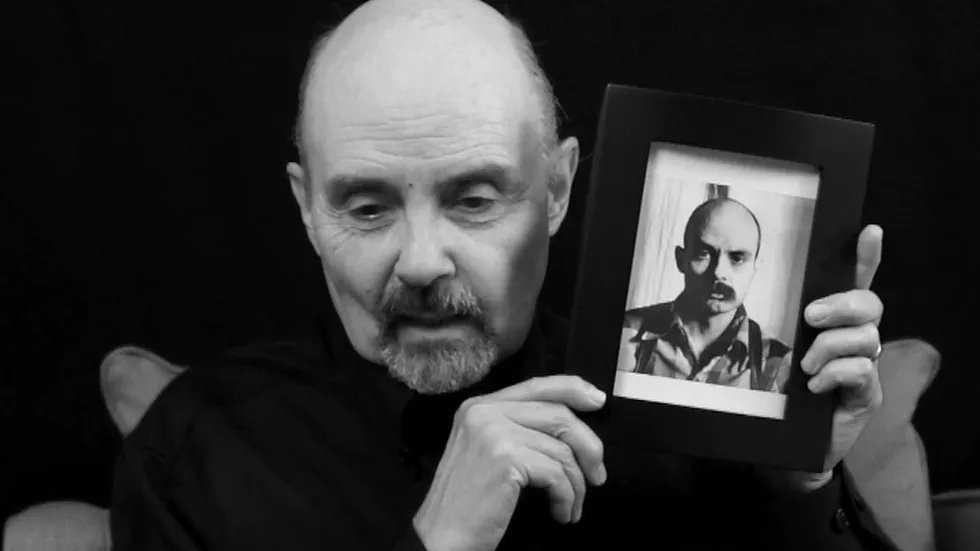
Written by Jack Fritscher
Hollywood and the Catholic Church - which is the real-time continuation of the Roman Empire - groomed me for the Colosseum.
In terms of Roman auguries, I was born fortunate during the bright noon hour of the year’s longest day on the Summer Solstice in 1939 and grew up idolising soldiers during the Second World War. As an 11-year-old learning Latin to be an altar boy in 1950, I could not resist MGM’s long hot burning PR campaign for its forthcoming Christians-versus-Gladiators epic Quo Vadis in 1951.
In my prayer book were Holy Cards of ideal teenage boys made into martyr-saints dying to protect their sexual purity at the hands of gladiators in the Colosseum. The nuns and priests said good boys should be like those saintly lads. What a lascivious seduction to role-play for real. What a shock when meditation on martyrdom turned into porn.
I laugh now that it was a perfect storm of piety, persuasion, prurience, and passion.
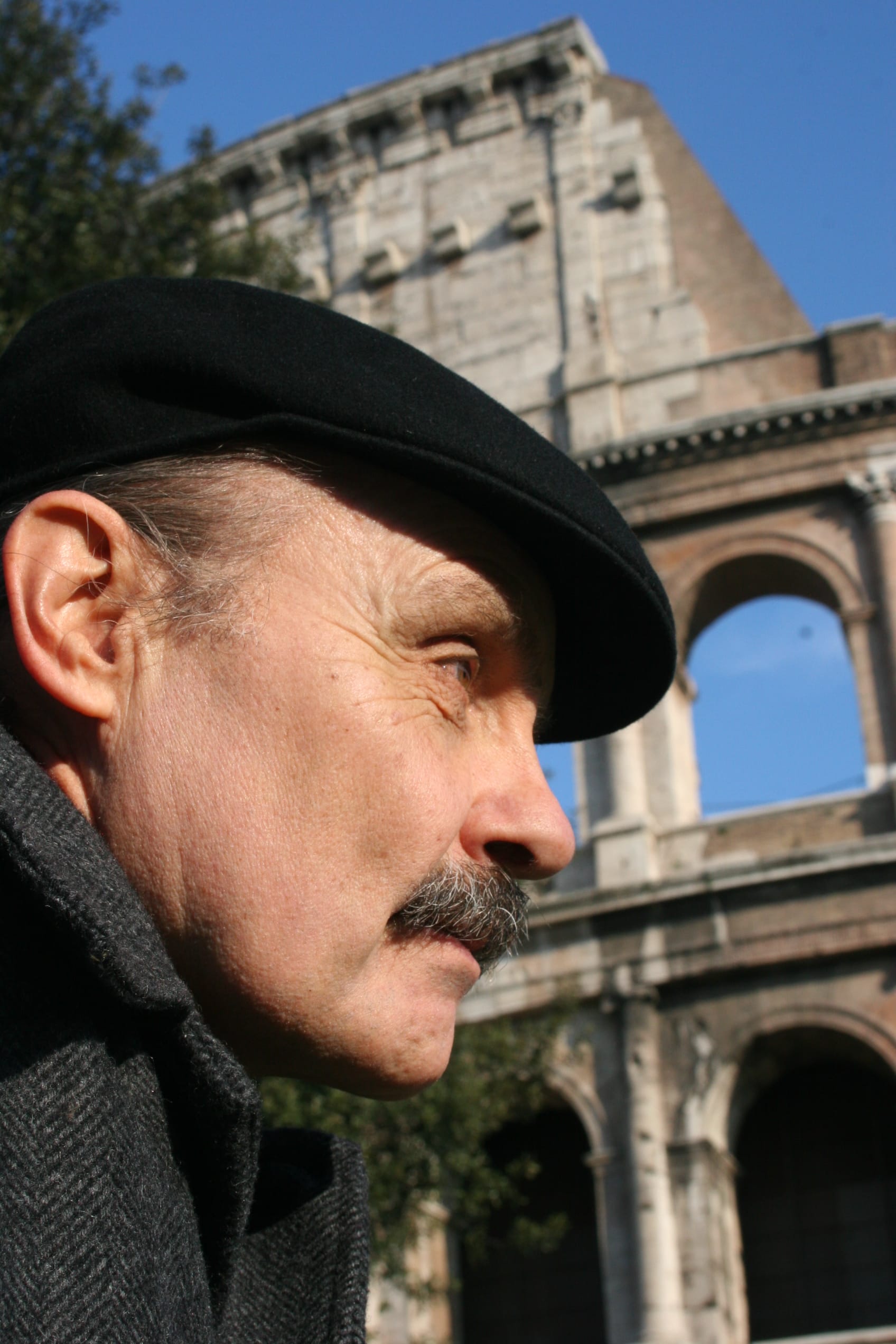
At 14 in 1953, I was awarded a scholarship to study for the priesthood and entered the Pontifical College Josephinum seminary which was directly subject to the Pope in Rome. Kneeling with five hundred other boys whom I’d live with for the next ten years, this adolescent boy suddenly woke up to the muscular bearded hot Jesus hanging stripped and crucified by Roman soldiers over the altar we all stared at daily during Mass. My pagan-Catholic gay sensibility was flipping everything I was told. In my formative years before irony set in, the backstory of Jesus was virility, his and mine, taught by priests who prided themselves on serving with the Marines in World War Two.
My own priest-uncle was a decorated Army Chaplain pictured in Time magazine burying American soldiers in a muddy field after the Battle of the Bulge. I was named after him and was raised to follow him into the priesthood. Each of us seminarians was instructed to become an alter Christus: another Christ. A soldier of Christ. The indoctrination about masculine identity and virtue was marvellously fucked. The word virtue comes from the Latin root vir for man.
I documented this in my 2023 novel Castro Street Blues: “Gay boys are the wild card in the straight deck. God knows, back in the 1950s during the fear and anxiety of the McCarthy witch hunts against the twin menaces of red commies and lavender queers, the sly Irish priest, proud of his separatist celibacy with women, had tried to groom the teen lord’s puberty into heterosexuality, but he could not be groomed by fascist dictates against his intuitive nature.
He knew nobody straight could ever teach him to be a man. He refused to dismiss his intuition. He was modern if they were not.”
Every day at lunch in our refectory, a priest would climb six stairs to a pulpit perched directly over our tables and every day read to us boys a new tale from The Roman Martyrology , a master class in S&M which revelled in the sporty Hollywood tortures of voluptuous naked Christian youths topped by uniformed Roman soldiers and leather-clad gladiators in the Colosseum.
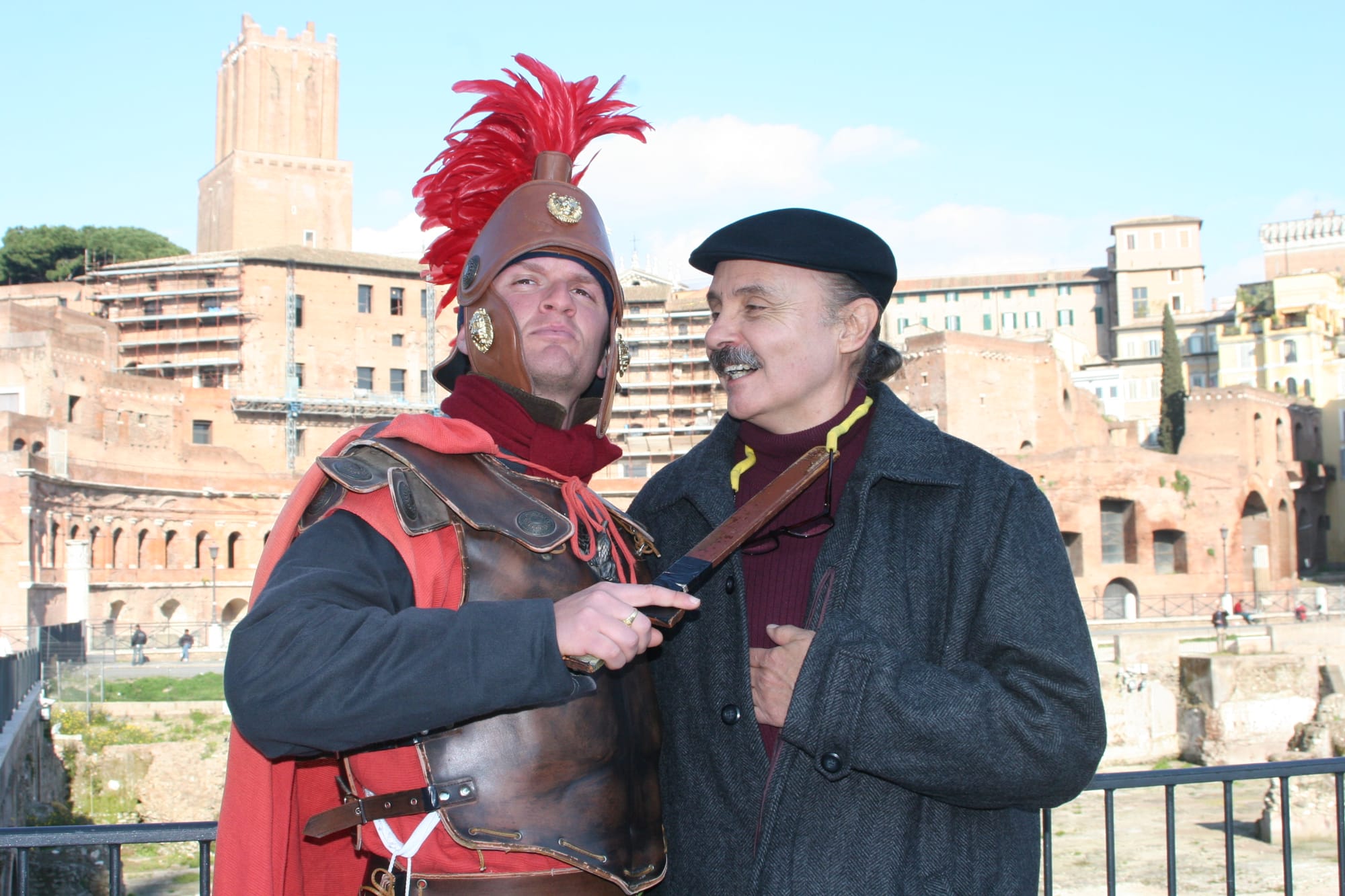
Even with all this hot pursuit of masculinity, I must emphasise about the priests and other seminarians that I never had sex in the seminary. No one ever touched or molested me. Between 1953 and 1963, I was left to my own devices to construct my manhood while repressing my sexuality. But that was okay, because, straight or gay, we boys would take vows of celibacy for life so what difference did homosexuality make if you were never to have sex at all?
One night asleep like a monk in my single room, I dreamed of a blond muscle boy in my class who appeared naked but censored wearing a white jockstrap which immediately turned jocks into a major fetish. I confessed a sin of impurity because, even though I was not responsible for it, I woke having a nocturnal emission during the dream, denying I wanted the pleasure.
A summer or two later, in 1961, when that blond muscle boy came to my family home for a visit, I took him out for a day on my sailboat and posed him standing on a wooden dock directing him to stand like Steve Reeves. I shot up at him to heroise and worship him and I’ve since realised that my 35mm colour transparency of that straight college boy - who became an archetype in my writing - was the first gay photo I shot with my gay gaze.
That gay gaze began in the 1940s when - as a Cub Scout - I loved staring into my subscription to Boys Life magazine because of its seductive ads for Bike Supporters. My father finally bought me a jockstrap for Christmas when I was 14 - it was my only rite of passage into manhood.
Since then, I’ve shot a thousand more gay photos for the Associated Press and magazines like The New Yorker, Vice, and thirty gay publications such as the leather magazine Drummer which I edited from 1977 to 1980 and to which I contributed fiction and photos until 1999.
Drummer pushed gladiators because 1970s readers had a fetish for them. In November 1976, the third issue of Drummer played to our readers’ Roman fetish with Bring on the Gladiators! In January 1976, the fourth issue headlined Movie Mayhem: The Gladiators Tear ’em Up Again. Nobody was better at blood, gore, and S&M than the boys in the arena.
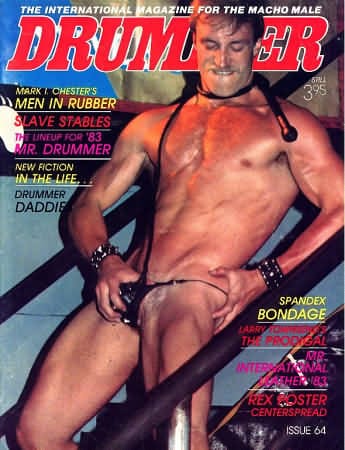
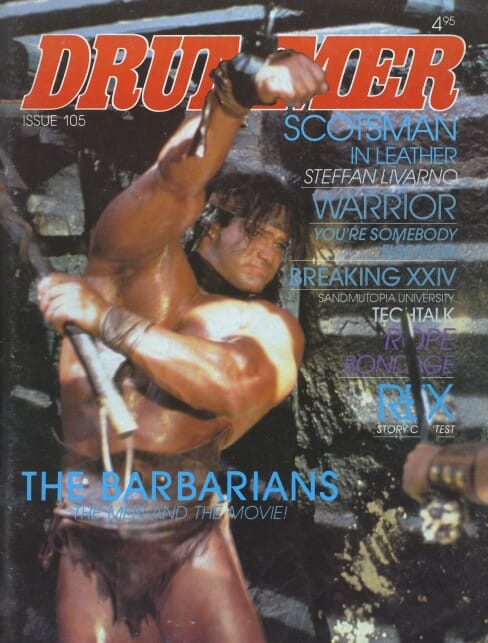
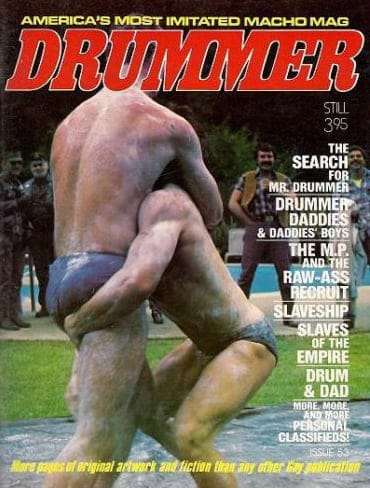
In 1981, with the simultaneous arrival of the VCR and HIV, I began upgrading gay masculinity from page to screen. Encouraged by that year’s hit porn film, Centurions of Rome, I shot 160 safe-sex feature videos for my Palm Drive Video whose tag line is “Masculine Videos for Men Who Like Men Masculine.” I gave my erotic features high-concept gladiatorial titles like When Bodybuilders Collide, Rough Night at the Jockstrap Gym, and - as a salute to the 1975 BBC series I, Claudius - I, Brutus: Muscle-Cop Road Warrior.
Palm Drive’s roster of titles also includes thirty or so of my ostensibly non-erotic sports features shot in my video vérité style showcasing straight men like cowboys at the Calgary Stampede, and athletes in physique contests. Plus there was the drop-dead lawmen I shot in seven video features running 15 hours of physique competition, wrestling, boxing, powerlifting, and tug-of-war filmed on my knees shooting up at gods, and on a ladder shooting down on the action at the gladiatorial 1988 Police Olympics in Bakersfield, California.
Talk about a sword-and-sandal week living up close and personal with my camera. I was shoulder-to-shoulder with the sweating athletes filming these road-warrior gladiators with a gay gaze television sports networks wouldn’t dare.
Whatever people think of homomasculinity, there is a huge market for masculine-identified art, books, and video. My friend, university professor David Van Leer - author of The Queening of America - told me that he knew more than one Manhattan Mandarin who kept Drummer under his mattress.
When Jacques Morali chose four archetypes for the Village People, he may as well have made one of then a gladiator. In gay code, gladiator signifies as much as “a friend of Dorothy.” In the 1980 movie Airplane, actor Peter Graves - trying to determine if a boy were straight or gay - asked one of the most quoted questions in cinema: “Joey, do you like movies about gladiators?”
In 1994, Gay Men’s Press in London published my take on homomasculine American men in a coffee-table book with 55 of my photos selected by elegant British art critic Edward Lucie-Smith who wrote an introduction about the concept of American homomasculinity.
Because of my mascu-queer theme of quintessential rough guys, GMP put one of my American gladiator photos of my most photographed model, the mighty “Goliath,” on the cover of the book the editor titled Jack Fritscher’s American Men. Earlier in 1990, I had contributed gut-punching photos to GMP’s nonfiction book by Brian Pronger, The Arena of Masculinity: Sports, Homosexuality, and the Meaning of Sex.
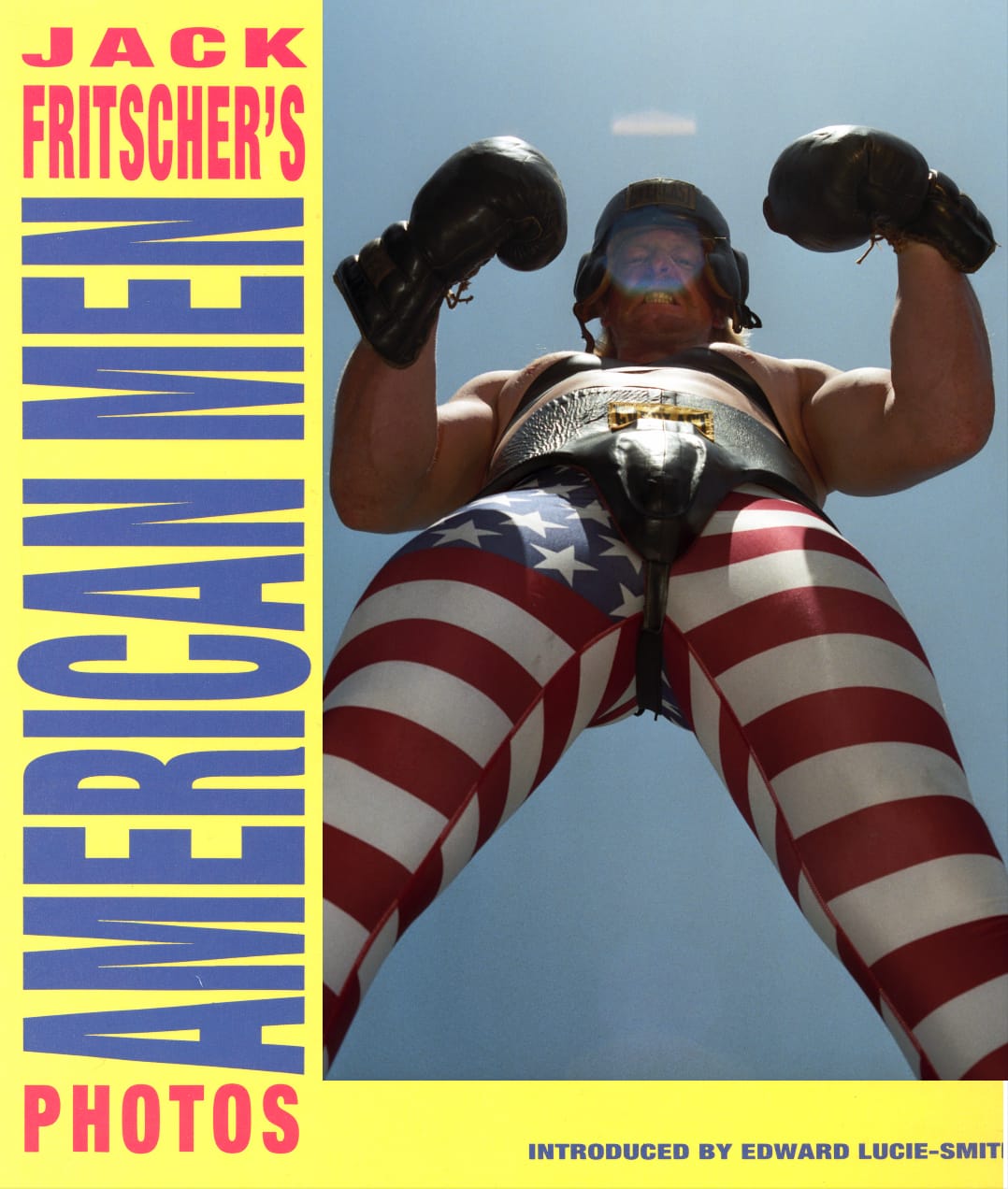
When I was 12 in 1951, my father started my career in journalism when he got me a paper route delivering the Peoria Journal Star to 120 homes seven days a week. I used my money to buy an extravagant one-dollar ticket to the klieg-lighted premiere of Quo Vadis starring the 6-foot-7 beefcake boxer Buddy Baer as the gladiator bear “Ursus.” When I came home and showed it to my loving Irish-American mother who worked two jobs, she kindly ushered me to the car and drove me directly to the Rialto Theater box office to return the ticket because admission the day after the premiere was twenty-five cents when the minimum wage was seventy-five cents. She taught me the value of a dollar, but she didn’t yet understand my need for opening-night glamour. Or for Buddy Baer.
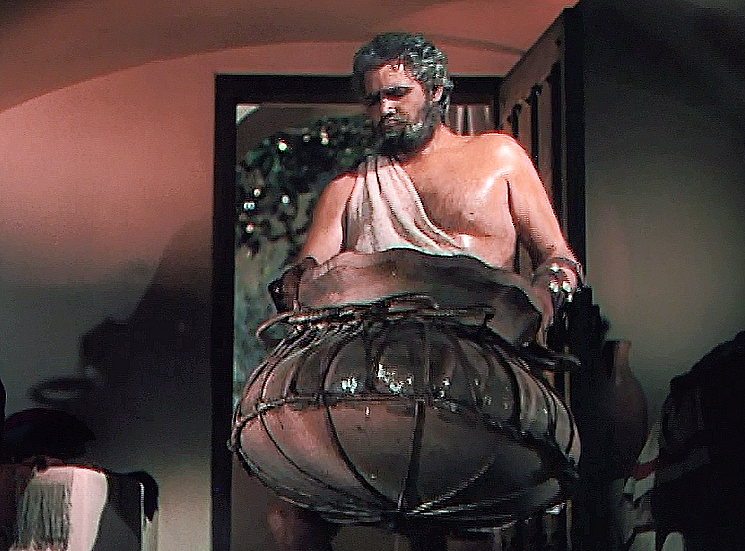
While watching Buddy and the gladiators and the Roman soldiers in Quo Vadis, I suddenly also got my first taste of camp (which I loved) from the British actors eating scenery: Peter Ustinov as Nero, Patricia Laffan as Poppaea, and Leo Genn as Petronius. Years later in Drummer 22, May 1978, I wrote a rave review of Derek Jarman’s film Sebastiane. I liked its camp opening that Lindsey Kemp made worthy of Fellini Satyricon. I liked its dialogue in Latin. I liked its all-nude hot mix of a manly young Christian soldier martyred by gladiator-soldiers.
In Drummer 19, December 1977, I wrote the first national feature article about the iconic New York sex club, the Mineshaft, where the nightly action was “Gladiators Gone Wild.” The Mineshaft promoted improvisational edge play in a gladiator arena. Two years before William Friedkin made the Mineshaft world-famous in Cruising, I spun Dante’s “Abandon hope, all ye who enter here” into “Hope for abandon, all ye who enter here.” I cautioned: “Anything you can fantasise is available somewhere in the Mineshaft which is not for those with low Fantasy Quotients. The Mineshaft now offers a ‘School for Lower Education’ to aid men in their search for themselves. Currently, an M.D., a psychiatrist, and a psychologist are needed to conduct the timid through courses geared to release their inhibitions. Dial 924-49XX. The Mineshaft is the pits. In the best sense. The Mineshaft is no place to take your daytime identity. The Mineshaft is the place of your night-time ID. Abandon inhibition all ye who enter here.”
My Spring Awakening began at 14 in 1953 when I left home and moved 500 miles to become a high-school freshman at the seminary and found myself turned on - as if it were my secret superpower - to photos in my Latin books illustrating ancient gladiator statues printed next to old engravings of gladiator action. That tumescence was a mortal sin, of course, even if I only hardened and did not jerk off to the glorious untrammelled virility. At that time, I didn’t want to have sex with these men. I had no clue as to what gay sex might be. Or straight sex for that matter. I grew faint wanting to grow up to be like them because I knew the hardest thing in the world to be was a man.
Postwar in the conformist 1950s when I was twixt twelve and twenty-one, you were manly or else you were black-and-blue-and-bleeding. One time, my straight but sensitive and prescient father gave me “the talk” gay boys need. “Be anyway you want to be. Your way in the world will be easier if you remember most people prefer men who are manly in the best sense. It’s not fair, but sissies get hurt and I don’t want my boy to be hurt.” Even so, I must clarify that effeminacy is an identity equal to homomasculinity because it’s always a virtue to follow one’s natural-born vocation to gender and gender expression.
So as a boy whose liberation started in movie theatres, I sat trying to understand my dick rising like a rocket fuelled by 1950s Roman epics like The Ten Commandments, The Silver Chalice, The Robe, and its sequel Demetrius and the Gladiators. To me, gladiator was a synonym for muscle guys like bodybuilders, athletes, and cops. It was empowering. This boy took up lifting weights to grow his man’s “mens sana in corpore sano.”
In 1971, Wakefield Poole chose Ed Parente’s drawing of a gladiator standing on a beach in his display ad for Boys in the Sand in the New York Times. Men identified with their inner gladiator. In 1970, New York leathermen founded the Praetorian Motorcycle Club which under its SPQR logo reported in its first newsletter: “Members are expected to maintain a masculine appearance and conduct themselves accordingly." In May 1982 when Drummer serialised Steven Saylor’s Slaves of the Empire, his series of S&M gladiator novels became bestsellers. Overall, rebel gladiators were an encouraging 1950s identity for boys gathering courage to come out to liberate themselves out of the worst decade in America to be gay into the revolutionary 1960s leading to Stonewall in 1969, when—to paraphrase Virginia Woolf’s “On or around December 1910, human character changed” - gay character changed.
In the 1970s, vanilla gay bars on their movie nights camped it up showing clips like the four-minute “Springtime for Hitler” from The Producers while leather bars were projecting the four-minute clip of Roman Emperor Malcolm McDowell, the left-over fascist from A Clockwork Orange, fisting a bridegroom in Caligula.
In 1955, when I was a new sixteen and my crush James Dean died, I found solace in exotic little pocket-magazines like Tomorrow’s Man, and Physique Pictorial published by Bob Mizer at his AMG Studio in Los Angeles where his best-selling 8mm gladiator movie extravaganzas of Imperial Rome reflected the lust of his mail-order customers.
In 1955, both TM and PP were selling 40,000 copies. In 1978, the monthly Drummer press run was 42,000. Mizer’s biggest gladiator star was the straight bodybuilder Ed Fury, the gay fetish fave, who went on to star in half a dozen sword-and-sandal epics in Italy. Ed had first criss-crossed from AMG to Hollywood with bit parts in Demetrius and the Gladiators, and Athena with Steve Reeves whom I later profiled in “Steve Reeve’s Screen Test” featuring gladiators as a gay identity subtext in Drummer 19, December 1977.
I also bought copies of Triumph magazine published by Kris Studio with combative muscle photos by Chuck Renslow, the leather emperor of Chicago, and my future friend whose homomasculine values I injected into my iteration of Drummer in the 1970s just as he opened up the annual “arena for the games” of his iconic International Mister Leather contest which continues to this day.
It’s positively aspirational around erotic identity that fifty or so flagship gay bars were named the Eagle invoking the most prominent symbol of ancient Rome, representing strength, courage, and immortality. Did ancient Rome have gladiator bars? Dozens more bars were called Arena. It was common in the 1970s to compare our Golden Age of sex with the rise and fall of the Roman Empire—and Weimar Germany.
In 1958, when I was 19 and majoring in philosophy studying Plato and the Platonic Ideal in college, Steve Reeves took my breath away with the absolute purity of his muscles, beard, and peplum in Hercules, and my voyeurism, right there in the Madison Theater balcony, morphed into masturbation, the magical thinking of self-curating masturbation, to conjure and salute Steve as the Platonic Ideal of men who define a particular statuesque masculinity.
With self-teaching in hand, I began sketching manly gladiators on paper and writing soft-core S&M scenes about the drawings because sketching and writing elevated me and made me hard. I was over-heated and under-ventilated. In my novella Castro Street Blues, I revealed a quandary I escaped from regarding my gladiator drawings. “The priest peered at him and asked a shocking question. ‘When you draw naked boys, do you draw them with or without a hard-on?’ He was an inexperienced virgin, but some latent gaydar defence system made him cool. He saw the trap of the trick question. There was a third answer. He said, ‘I don’t draw pictures of naked boys.’ It was the truth - he drew robust but modest gladiators and slaves wearing loincloths and pouches. The priest sucked his cigar so hard the red tip crackled.”
Living then as a proper Catholic teenage seminarian, I pulled off a stunt. From 17 to 24, wanting to be published, I disguised my fetish writing with slick ambiguities for Catholic magazines which published my review of Spartacus in 1960, my homage to the young, gay, and dead James Dean in 1962, my story of black African teen male martyrs in 1963, and my S&M noir tale of a South American political saviour crucified by gladiatorial fascists in 1964.
In those years before the gay press existed, I wrote in code hoping to entertain and amplify other closeted boys on the sly. My gaydar then and now told me those first stories were bought for entertainment and steam heat by clever priest-editors who were themselves most likely closeted force multipliers of our pre-Stonewall gay underground.
So I buried all my early sexual experiences and temptations in code, both in my daily life and in my writing which vented my repression and made me the gay Catholic author I am today. By that I mean I remain culturally Catholic like my 1970s bicoastal lover Robert Mapplethorpe bending Catholic imagery in his aggressive photography.
Without enduring the repression in the 1950s and 1960s, I might not have become a gay writer in the 1970s, moving from writing for Catholic magazines from 1957 to 1964, to editing and writing the newly founded Drummer magazine from 1977 to 1999.
In 1965, to begin documenting my journey to sexual freedom, I wrote my first novel, What They Did to the Kid: Confessions of an Altar Boy. It’s a coming-out novel of self-esteem. My inquisitional thumbnail tells all: “The really dangerous life of altar boys. The Catholic Church recruited 200,000 boys into seminaries in the 1950s. Only 20,000 were ordained. What happened to the missing 180,000 boys?”
I had an inside eyewitness to Catholicism because the Josephinum was directly subject to the Pope in Rome and one of my schoolmates for six years was the boy who became Bernard Cardinal Law of Boston, who as a student, my gaydar figured from his posturing, was an imperious queen who later became notorious for his cover-ups of molestation by his priests - based, I think, on what he learned in conservative Canon Law classes.
In 1969, my aesthetic from the gladiator novel I drafted when I was 14 became the core of my novel of leather bikers who are American gladiators, Leather Blues: The Adventures of Denny Sargent and then grew from there into my nonfiction Popular Witchcraft which in 1972 became a pagan hit because of my inquiry into traditional religion and the American occult and my interview with the extraordinary Anton Lavey, founding High Priest of the Church of Satan in San Francisco.
In 1980, the main character in Kid re-appears to continue his quest for homomasculinity in my signature novel about bacchanalian gladiator sex at the bars and baths in the 1970s, Some Dance to Remember: A Memoir-Novel of San Francisco 1970-1982. I insisted that the cover of the first edition be a photograph of one of the sixty white-marble gladiator statues in Mussolini’s outdoor sports arena, the Foro Italico in Rome.
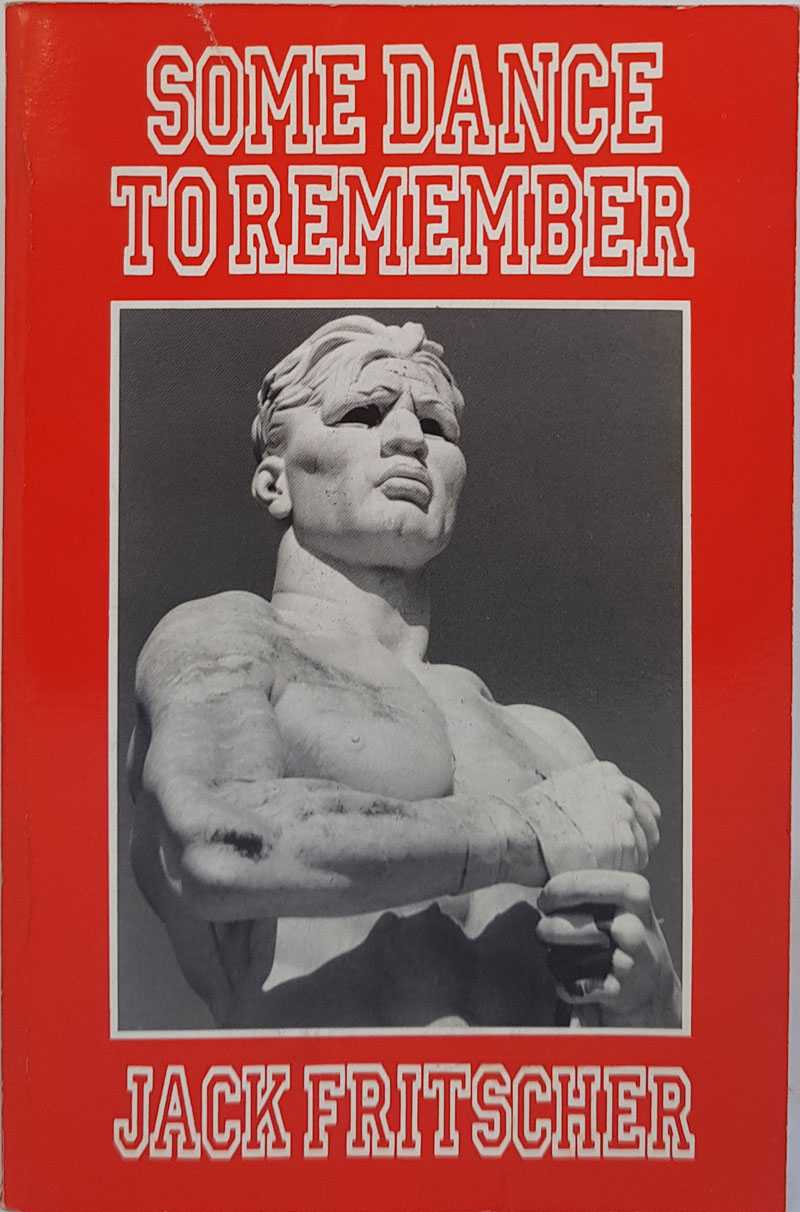
Having written a hundred erotic short stories and fantasias for magazines during the Golden Age of Gay Magazines (1975-1999) before the Internet killed the publications, and readers’ eyes turned to screens, I, now 85, continue to write gay history, fiction, and poetry of a gentler sort while editing a collection gathering all my short fiction, published in so many places, into one big fat chronological anthology with a bibliography of publication history.
As editor of Drummer and several fiction book anthologies like Chasing Danny Boy and Tales of the Bear Cult, I have had to read so many thousands of erotic manuscripts that I can no longer willingly suspend my editorial disbelief which is core to reading erotica.
I don’t read internet fiction which seems more like typing than writing. I tried to appreciate the new Male-Male romance and adventure novels which read like product churned out in series by Artificial Intelligence minus Erotic Intelligence, written by authors who’ve never been fucked, really fucked, fucked up, or fucked over.
Maybe I’m too old to appreciate this sanitised new eros which is so far away from mid-century classic gay stories written to cause masturbation. By definition and custom and art, erotic stories dig deep into the queer psyche and exist as real literature intended to get readers off.
It’s the difference between the erotic integrity of a 1970s photo by Robert Mapplethorpe and a 2024 photo by a wannabe Mapplethorpe. Back then, readers and writers were having real experiential sex with real people as opposed to readers and writers now having bloodless passion-free virtual sex on Pornhub.
For current readers wanting to dive into erotic fiction, I recommend the erotic fiction anthology series of books, 1980-2010, each containing dozens of diverse authors vetted and curated by brilliant editors like my dear friends Richard Labonté (Best Gay Erotica) and Susie Bright (Best American Erotica).


